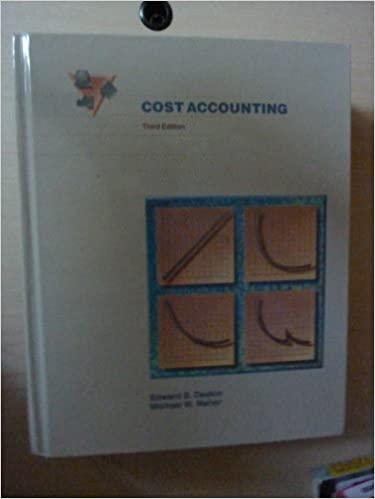Transfer Pricing Third-Party Consequences: Arco owns a substantial interest in oil production in the northern part of
Question:
Transfer Pricing Third-Party Consequences: Arco owns a substantial interest in oil production in the northern part of Alaska. The North Alaska market for crude oil cannot absorb all of the production from the area. Hence, nearly all of the oil must be shipped through the Trans Alaska Pipeline System to the southern part of Alaska for delivery to tankers which then deliver the crude to the U.S. West Coast where all of Arco's Alaska crude oil is refined and marketed. The U.S. West Coast market faces an oversupply of crude oil. Some Alaska producers, therefore, ship their oil though the Panama Canal to the U.S. Gulf Coast where their crude oil is then refined and marketed. Arco's share of Alaska production is approximately 150 million barrels of crude oil per year. Production quantities are fixed by the capacity of the pipeline system to carry the crude oil across Alaska.
Oil production is subject to a severance tax due the state based on the value of the crude oil at the point of production and a royalty which is an amount paid to the landowner for the rights to produce. Severance taxes in Alaska equal 12 percent of the value of production. The royalty amount is effectively equal to 12.5 percent of the value of each barrel of oil produced. In the early 1980s, the federal government levied a windfall profit tax which, for our purposes, is equivalent to 15 percent of the value of oil and gas produced. These three cost items (severance taxes, royalty, windfall profit taxes) are based on a percentage of the value of production before the oil enters the pipeline system. However, value cannot be determined directly at that point because virtually no oil is sold at that point. It is necessary to determine a transfer price at the point where the crude oil leaves the producing field and enters the pipeline system. The greater the transfer price, the greater the royalty and taxes and vice versa. The transfer price is calculated by taking the "market value" of the crude oil where there is a market and deducting the costs to ship the crude oil through the pipeline system (known as a "tariff') and the costs of transporting the crude oil from the pipeline to the market. None of the pipeline operating costs are affected by the amount of the tariff. Other operating costs are estimated at $2.50 per barrel re- gardless of the method used for transfer pricing. In recent years, the selling price for crude oil on the U.S. West Coast has been $19 per barrel. Costs to ship from the southern coast of Alaska to the U.S. West Coast approximate 75 cents per barrel. The selling price for crude oil on the U.S. Gulf Coast averages $20 per barrel. However, shipping costs from Alaska to the U.S. Gulf Coast average $3.70 per barrel. Arco argues that although it sells no oil on the U.S. Gulf Coast, that is the appropriate market because the U.S. West Coast is so flooded with Alaska crude oil that it is not an appropriate market for valuation purposes. Regardless of the basis for the transfer price, Arco will dispose of its crude oil on the U.S. West Coast and incur the costs to ship it to that destination.
Arco owns a proportional interest in the Trans Alaska Pipeline Company equivalent to its interest in production from northern Alaska. Unlike crude oil production, pipeline earnings are not subject to royalty, severance taxes, or windfall profit taxes. Arco argues that the cost to ship the crude oil through the pipeline system (the tariff) is $6 per barrel, based primarily on the assumption that the pipeline should be depreciated over one half of its useful life and that the cost of building the pipeline should be based on the assumption that Arco used 100 percent equity rather than leveraged the costs of pipeline construction. The state of Alaska and others argue that the pipeline shipping cost is closer to $3 per barrel based on straight-line depreciation over the expected useful life of the pipeline and based on recognition of the fact that 90 percent of the pipeline costs were financed with debt at less than prime lending rates. The value of the pipeline service cannot be determined through open market transactions because those who ship through the pipeline are the same companies as those who produce the crude oil.
Required:
a. What are the four possible combinations of valuation techniques for northern Alaska crude oil?
b. Prepare a schedule showing the annual severance taxes, royalty, windfall profit taxes, and operating profits to Arco from each of the four valuation methods.
c. Assuming there were no tax or royalty considerations, if you wanted to establish a market price for Arco's north Alaska crude oil, would you use the U.S. West Coast price or the U.S. Gulf Coast price as a starting point in the valuation exercise? Support the price you choose.
Step by Step Answer:






